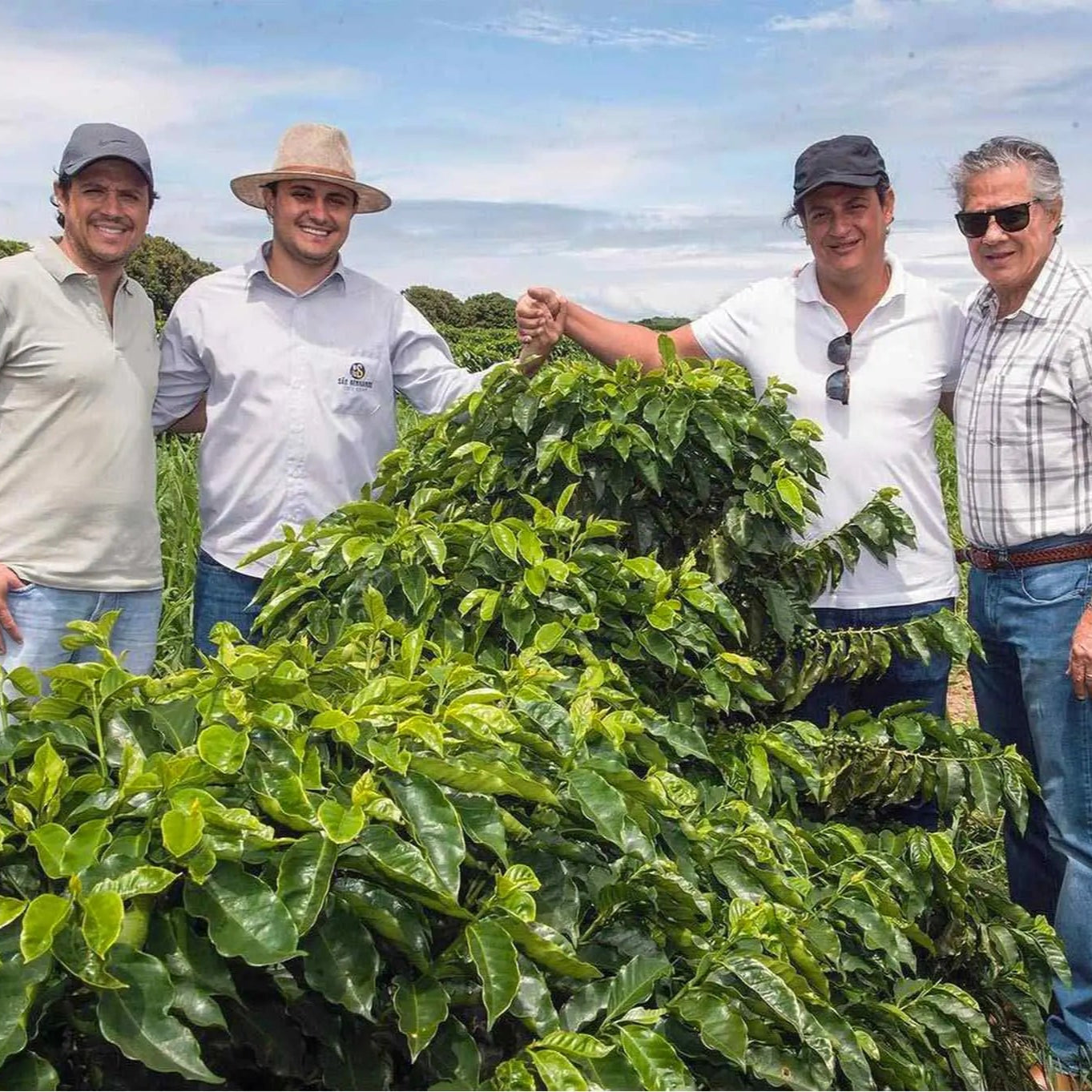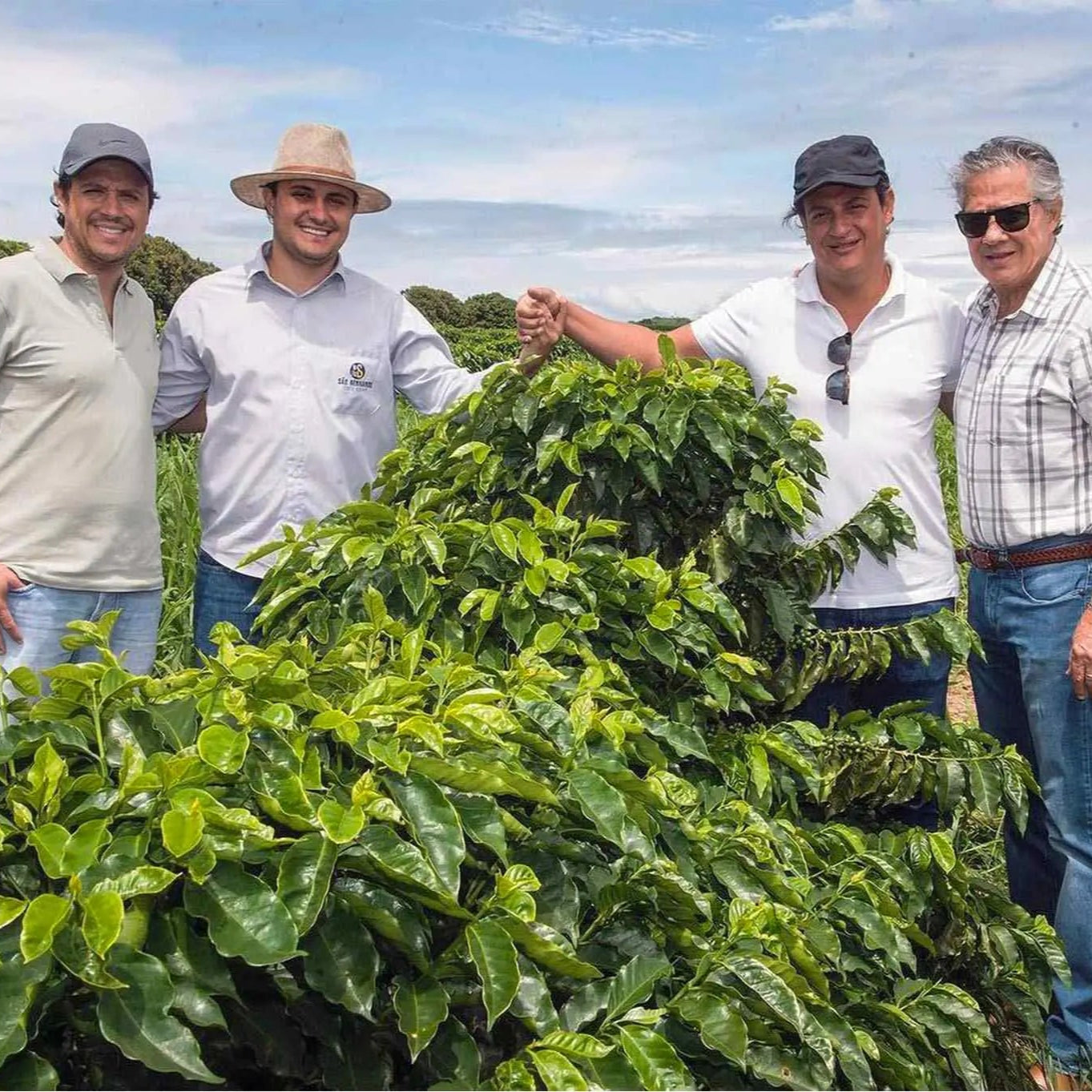
Are you looking to buy Brazil | Fazenda Bom Jardim | Mundo Novo, Topázio, IBC 12 Washed in Australia?
About the producer
Way before Cerrado Mineiro became known for the quality of its coffee, the Queiroz family was already cultivating the plant in the region. In fact, Roberto’s father was among the first three coffee producers of the Cerrado, and for the last 50 years the family has been developing techniques which make for an outstanding range of specialty coffees. Located close to the city of Patrocínio 950 meters above sea level, Bom Jardim Farm comprises a total of 360 hectares, where there is a large lake and an assortment of wild animals such as monkeys and siriemas.
The farm is very well organised, with a production line that co-exists harmonically with the environment through the employment of technologies that minimize impact and allows for the conservation of biodiversity. The UTZ certification guarantees good social practices and the workers follow strict security measures. As for the coffee, its quality speaks for itself: 100% of it is traceable and all lots are carefully separated according to their characteristics.
-
About Mundo Novo, Topázio, IBC 12
Mundo Novo is one of Brazil’s most well-known coffee cultivars. It’s a natural hybrid between Bourbon and Typica, discovered in the 1940s in the municipality of Mundo Novo, São Paulo. The variety is prized for its high yield and robust growth, especially in higher altitudes around 1,000–1,200 meters. Mundo Novo plants grow tall and require more space and pruning but are relatively disease-resistant. In the cup, Mundo Novo often presents a classic Brazilian profile—chocolatey, nutty, with low acidity and a full body—making it a favorite for espresso and blends.
Topázio is a cross between Mundo Novo and Yellow Catuai, developed by the Agronomic Institute of Campinas (IAC). It’s known for combining the productivity and vigor of its parent varieties while offering a more compact plant structure than Mundo Novo. Topázio produces both red and yellow cherries, though the yellow is more common. It tends to perform well across a range of elevations and farming systems. In terms of cup profile, Topázio can be quite sweet and balanced, often showcasing caramel, dried fruit, and mild citrus notes, which makes it popular among specialty coffee producers looking for approachable but complex profiles.
IBC 12, also referred to as Catucaí IBC 12, is a cultivar developed by the Brazilian Coffee Institute (IBC) before it was dissolved in the early 1990s. It is a hybrid of Icatu and Catuaí, designed to bring together high productivity and rust resistance in a compact, manageable plant. IBC 12 has gained traction among producers for its resilience and consistency across diverse climates and soil types. The flavor profile of IBC 12 varies depending on processing and terroir but typically includes mild acidity, good body, and notes of chocolate, spice, and soft fruit—making it a dependable choice for both commodity and specialty segments.
Coffee in Brazil
Just under 40% of all coffee in the world is produced in Brazil - around 3.7 million metric tons annually. With so much coffee produced, it’s no wonder that the country produces a wide range of qualities. Brazil produces everything from natural Robusta to the neutral and mild Santos screen 17/18, to the distinctive Rio Minas 17/18. In recent years, Brazilian producers have also begun investing more heavily in specialty coffee production. Through our in-country partners in Brazil, including our sister company, we are able to provide a wide range of Brazilian coffees to our clients: from macrolot to microlot.
Today, the most prolific coffee-growing regions of Brazil are Espirito Santo, São Paulo, Minas Gerais, and Bahia. Most Brazilian coffee is grown on large farms that are built and equipped for maximizing production output through mechanical harvesting and processing. The relatively flat landscape across many of Brazil’s coffee regions combined with high minimum wages has led most farms to opt for this type of mechanical harvesting over selective hand-picking.
In the past, mechanization meant that strip-picking was the norm; however, today’s mechanical harvesters are increasingly sensitive, meaning that farms can harvest only fully ripe cherries at each pass, which is good news for specialty-oriented producers.
In many cases and on less level sections of farms, a mixed form of ‘manual mechanized’ harvesting may be used, where ripe coffee is picked using a derriçadeira – a sort of mechanized rake that uses vibration to harvest ripe cherry. A tarp is spanned between coffee trees to capture the cherry as it falls.
With the aid of these newer, more selective technologies, there’s a growing number of farms who are increasingly concerned with – and able to deliver - cup quality.
SKU: brazil_fazenda_1000g
Package Weight: 1150g

